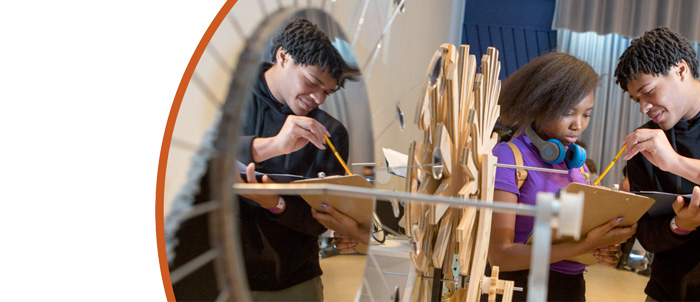Peer influences on adolescents' self-concept, achievement, and future aspirations in science and mathematics: Does student gender and race matter?
Effective Years: 2014-2021
In the past thirty years a national debate has been brewing about the scarcity of women and racial/ethnic minorities in science, technology, engineering, and mathematics (STEM), and its grave implications for the American workforce in the 21st century. From middle school through college, girls and women have performed less well on standardized tests in science and mathematics than their male peers and express less confidence and aspirations in these fields. Similar findings emerge for Black and Latino students in terms of STEM self-concept and aspirations. Recently, the gender gap in science and math performance has been closing but the gap in STEM self-concept and aspirations remains large. What drives these gender and race disparities in STEM? Many girls and students of color lose interest in STEM before college partly because the stereotype of the successful student in STEM is male, White or Asian, and nerdy. Girls are particularly affected by STEM stereotypes because of their incompatibility with gender role expectations. The proposed research in this grant focuses on solutions to the leaky pipeline by investigating peer influences and classroom dynamics that protect adolescent girls from STEM stereotypes using the Stereotype Inoculation Model. This present work concentrates on contact with other girl peers in science and math classrooms as "social vaccines" who inoculate adolescent girls' mind against negative stereotypes. Four objectives guide this work: (1) To examine whether learning STEM with all-girl peers vs. mixed-sex peers in middle school enhances girls' engagement in STEM. (2) To assess whether the presence of all-girl peers has similar effects on Black and Hispanic girls (who face gender and racial stereotypes in STEM) compared to White girls (who face gender but not racial stereotypes). (3) To identify features of classroom peer dynamics that predict girls' STEM outcomes and test whether they occur differentially in all-female vs. mixed-sex classes. (4) To test if peer dynamics identified as beneficial produce the same positive outcomes for girls when put in action in mixed-sex classes. This research will be conducted by Nilanjana Dasgupta, Principal Investigator at the University of Massachusetts at Amherst, in partnership with Catherine Riegle-Crumb, Co-Investigator at the University of Texas at Austin, and a diverse team of middle schools spread across the nation.
Two studies are proposed. Study 1 provides an in-depth analysis of peer dynamics in math and science classrooms in middle school and tests the extent to which they predict student outcomes in STEM. Using a longitudinal quasi-experimental design this study will compare girls in single-sex classes in science and math with girls and boys in coed classes and follow their progress across one year in middle school. Hierarchical regression and propensity score analysis will be the primary data analytic technique. The goal is to identify peer dynamics in class, measure whether they occur differentially in all-girls classes vs. mixed-sex classes, and test the extent to which they predict girls' STEM outcomes. Once the most beneficial peer dynamics are identified, Study 2 will test whether these, when put in action in mixed-sex classrooms, produce the same benefits for girls in coed classes using a large nationally representative sample of American 8th graders from the Trends in International Mathematics and Science Study, 2007 (TIMSS). TIMSS 2007 contains sufficient classroom-level information to estimate within-class peer dynamics and to test their relation to student outcomes. Hierarchical linear modeling will be the data analytic technique. Our goal is to look for converging and complementary evidence using multiple methods across two studies making it a powerful package.
The contribution of the proposed research is to identify specific types of peer influences and classroom dynamics in math and science classes that get girls hooked on STEM, increase their confidence, and motivate them to aspire higher. Another contribution is to examine whether these peer dynamics work similarly or differently for African American and Latina girls compared to their White peers. An important intended outcome is to translate the research findings into a set of concrete classroom practices, interventions, and learning methods that will be disseminated broadly to K-12 teachers, principals, education policy professionals, and other stakeholders in order to enhance STEM teaching practices and attract, retain, and advance more girls and students of color in STEM. Many of the classroom practices, interventions, and learning methods that emerge from this project are likely to generalize beyond K-12 classrooms to benefit women in college STEM classes. Thus, the dissemination plan for the proposed research will include STEM faculty, students, department chairs and deans in higher education institutions as well, to impact recruitment and retention of diverse groups of women in college. Another intended outcome of this research is to integrate knowledge across multiple disciplines (psychology, education, sociology) and generate new insights in the science of broadening participation by examining interactions among institutional (or macro) factors, classroom (or meso) factors, and individual (or micro) factors that influence adolescents? STEM aspirations.




